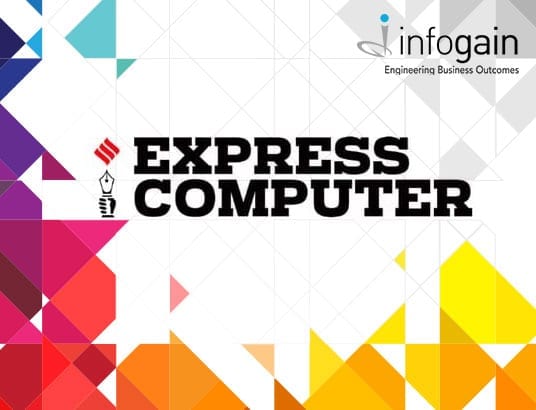- Posted on : February 19, 2019
-
- Industry : Human Resource
- Service : Corporate
- Type: News

The gap within the same job roles has widened. The variance on spread has gone from 150 percent to 200 percent in some of the job roles. This is hurting the parity aspect of compensation distribution
The following article appeared in Express Computers as a Guest Article written by Rajiv Naithani, HR Head – India, Infogain Corp.
There has been a significant shift in the salary trends in the IT industry. Post 2008 recession, the salary variance within the job role had become consistent. However, for a last 18 to 24 months, the variance has seen a significant shift. The gap between the minimum and maximum compensation is widening within the same job role. This is happening because of three main reasons:
- During last two years, companies are focusing on people who are relevant and hold the right skills and are willing to pay premium. All such candidates who have developed and acquired
 new skills in the digital space, including full stack developers, are in demand. Companies were realising that hiring developers with expertise in one language just was not enough anymore and they need somebody who could contribute in multiple languages by ramping up in the shortest time frame. The other side of the talent pool which preferred to stick the conventional way of functioning have been the laggard and their salaries have not shifted enough.
new skills in the digital space, including full stack developers, are in demand. Companies were realising that hiring developers with expertise in one language just was not enough anymore and they need somebody who could contribute in multiple languages by ramping up in the shortest time frame. The other side of the talent pool which preferred to stick the conventional way of functioning have been the laggard and their salaries have not shifted enough. - The new digital technology skills are demanding premium. Due to supply being less of ready to deploy candidates, companies are willing to pay higher compensation to them. Some roles and skills are turning out to be business premium roles and skills
- Increased rotations of talent among companies and hiring of new digital technology savvy IR professionals have caused a disequilibrium on the demand and supply ratio. In a few pockets, it has become like an employee driven market than employer driven market and compensation asks have gone crazy. You may have three years’ experience talent seeking compensation close to Rs 20 lakh, which was never the case earlier.
Attrition has picked up for majority of the companies. Holding the people is becoming a challenge. The gap within the same job role has widened. Besides, the salary increment budgets in the IT industry, particularly in services businesses have been restricted to single digit for many years now. Due to this the correction to lower quartile is becoming a challenge for companies to manage beyond the merit increments. This is also not helping in addressing the parity issue at the speed it should have; resulting in disparity, discontentment and attrition issues.
Some of the jobs which are highest paying IT jobs in India include DevOps Engineers, Cloud Engineers and Architects, Usability Experts, ML & AI Engineers, RPA Developers, Cyber Security Architects, Full Stack Developers, Big Data Experts, etc. All digital skills like RPA, IoT, ML, AI, cyber security, cloud technology, etc, coupled with DevOps and agile, will draw premium salaries in the near future.
Best pay usually gets offered by IT product companies. With product companies, they want to attract the best talent to work on their R&D set up, which is either focusing on legacy modernisation, or embracing the digital technologies for rebuilding their platforms or solutions. For such jobs, they require outstanding talent to work with them and are willing to pay higher compensation for this set of people. The salary may vary from company to company.
New emerging or non-metro cities have reduced the compensation gap, which used to be favouring the companies earlier. Millennials are now willing to relocate for better work and compensation. From a business standpoint, it is still the cost which drives the differentiation between the cities primarily due to two reasons – talent pool and the number opportunities.
Almost all the companies have learned the art of packaging their overall rewards system which comprises of tangible and non-tangible benefits offered to the employees. One significant differentiator for any company today is to create a positive employee experience as a differentiator for engagement and retention. The other element which cuts across the differentiator is the culture of the company. Trust, openness and transparency are the key elements of non-monetary remuneration.
(The author is the HR Head – India, Infogain Corp)






